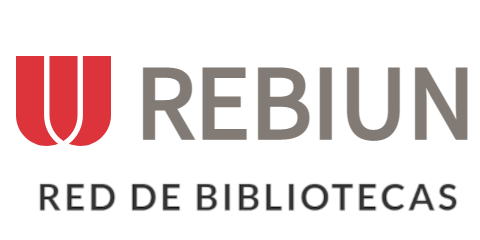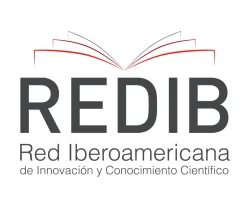Fisicoquímica de Superficies: la Ciencia de los Materiales Porosos
Resumen
En este artículo se analiza el papel de los materiales porosos en la ciencia y la tecnología, destacando sus propiedades distintivas y su amplia gama de aplicaciones. Caracterizados por la presencia de cavidades, permiten la adsorción y transformación química de moléculas, lo que los convierte en sistemas fundamentales para la catálisis y el almacenamiento de energía. La condensación capilar y la histéresis de sorción adquieren particular relevancia al proporcionar información crucial sobre la distribución y el tamaño de los poros. Modelos teóricos como el de unión en sitios duales (DSBM) describen interacciones cooperativas dentro de redes porosas, facilitando la predicción del comportamiento en medios complejos. Paralelamente, el enfoque termodinámico refuerza la comprensión de los cambios de fase, y la simetría de los poros influye en la dinámica de fluidos y gases. Además, diferentes tipos de materiales porosos, como las zeolitas, sobresalen por su alta estabilidad química y térmica, su capacidad catalítica y su utilidad en la producción de combustibles. Finalmente, se abordan las aplicaciones biomédicas de los materiales porosos, posicionándolos como herramientas críticas en las ciencias biológicas.
Descargas
Citas
Abuzeid, H. R., EL-Mahdy, A. F., & Kuo, S. W. (2020). Hydrogen bonding induces dual porous types with microporous and mesoporous covalent organic frameworks based on bicarbazole units. Microporous and Mesoporous Materials, 300, 110151.
Ahuja, G., & Pathak, K. (2009). Porous carriers for controlled/modulated drug delivery. Indian journal of pharmaceutical sciences, 71(6), 599.
Ahumada, M., Jacques, E., Calderon, C., & Martínez-Gómez, F. (2019). Porosity in biomaterials: A key factor in the development of applied materials in biomedicine.
Benco, L., Demuth, T., & Hutschka, F. (2003). Catalytic conversion of hydrocarbons over zeolites from first principles. Computational materials science, 27(1-2), 87-95.
Bennett, T. D., Coudert, F. X., James, S. L., & Cooper, A. I. (2021). The changing state of porous materials. Nature Materials, 20(9), 1179-1187.
Blatov, V. A., Blatova, O. A., Daeyaert, F., & Deem, M. W. (2020). Nanoporous materials with predicted zeolite topologies. RSC advances, 10(30), 17760-17767.
Chen, Z., Mo, S., Lin, H., Wu, Z., Zhao, Y., Hua, X., & Zhao, P. (2023). Understanding porous materials with pair distribution functions. Cell Reports Physical Science, 4(12).
Cimino, R., Cychosz, K. A., Thommes, M., & Neimark, A. V. (2013). Experimental and theoretical studies of scanning adsorption–desorption isotherms. Colloids and Surfaces A: Physicochemical and Engineering Aspects, 437, 76-89.
Day, G. S., Drake, H. F., Zhou, H. C., & Ryder, M. R. (2021). Evolution of porous materials from ancient remedies to modern frameworks. Communications Chemistry, 4(1), 114.
Derakhshankhah, H., Jafari, S., Sarvari, S., Barzegari, E., Moakedi, F., Ghorbani, M., ... & Tayebi, L. (2020). Biomedical applications of zeolitic nanoparticles, with an emphasis on medical interventions. International journal of nanomedicine, 363-386.
Ekneligoda, T. C., & Zimmerman, R. W. (2006). Compressibility of two-dimensional pores having n-fold axes of symmetry. Proceedings of the Royal Society A: Mathematical, Physical and Engineering Sciences, 462(2071), 1933-1947.
Guo, Z., & Zhou, C. (2021). Recent advances in ink-based additive manufacturing for porous structures. Additive Manufacturing, 48, 102405.
Hernández, M. A., Rojas, F., Portillo, R., Salgado, M. A., Rubio, E., & Ruíz, S. (2016). Creating nanoporosity in Na, Ca and Mg exchanged erionite zeolite. International Journal of Nanotechnology, 13(1-3), 28-43.
Horikawa, T., Do, D. D., & Nicholson, D. (2011). Capillary condensation of adsorbates in porous materials. Advances in colloid and interface science, 169(1), 40-58.
Hoseini, S. S., Seyedkanani, A., Najafi, G., Sasmito, A. P., & Akbarzadeh, A. (2023). Multiscale architected porous materials for renewable energy conversion and storage, Energy Storage Mater. 59 (2023) 102768.
Kimura, T., Liu, C., Li, X., Maekawa, T., & Asaoka, S. (2012). Conversion of isoprenoid oil by catalytic cracking and hydrocracking over nanoporous hybrid catalysts. BioMed Research International, 2012(1), 637125.
Kornhauser, I., Rojas, F., & Domínguez, A. (2010). Resolution of an Instructive Gibbs-Energy Problem from the Prigogine-Defay-Everett Framework of Chemical Thermodynamics. Chem. Educator, 15, 334-339.
Kornhauser, I., Felipe, C., Esparza, J. M., Domínguez, A., & Rojas, F. (2013). Mercury intrusion effects modelled in pores with axial symmetry and attenuated cross section. Adsorption Science & Technology, 31(2-3), 249-261.
Lee, J., Kong, T., Park, J., Han, S., Choi, H., Sun, J., ... & Park, J. J. (2024). Modified nanoporous zeolites on a biodegradable polymer film with excellent hydrophobicity, ethylene gas adsorption, and antibacterial activity through surface charge accumulation. Chemical Engineering Journal, 155236.
Li, R., Wen, X., Zhao, Y., Fan, S., Wei, Q., & Lan, K. (2024). Metal-based mesoporous frameworks as high-performance platforms in energy storage and conversion. Energy Reviews, 100108.
Lu, A. H., & Schüth, F. (2006). Nanocasting: a versatile strategy for creating nanostructured porous materials. Advanced Materials, 18(14), 1793-1805.
Mangun, C. L., Daley, M. A., Braatz, R. D., & Economy, J. (1998). Effect of pore size on adsorption of hydrocarbons in phenolic-based activated carbon fibers. Carbon, 36(1-2), 123-129.
Mayagoitia, V., Rojas, F., & Kornhauser, I. (1985). Pore network interactions in ascending processes relative to capillary condensation. Journal of the Chemical Society, Faraday Transactions 1: Physical Chemistry in Condensed Phases, 81(12), 2931-2940.
Morishige, K. (2021). Revisiting the nature of adsorption and desorption branches: temperature dependence of adsorption hysteresis in ordered mesoporous silica. Acs Omega, 6(24), 15964-15974.
Mhemeed, A. H. (2018). A general overview on the adsorption. Indian Journal of Natural Sciences, 9(51), 16127-16131.
Na, K., Choi, M., & Ryoo, R. (2013). Recent advances in the synthesis of hierarchically nanoporous zeolites. Microporous and Mesoporous Materials, 166, 3-19.
Na, K., & Somorjai, G. A. (2015). Hierarchically nanoporous zeolites and their heterogeneous catalysis: current status and future perspectives. Catalysis Letters, 145, 193-213.
Nasrollahzadeh, M., Atarod, M., Sajjadi, M., Sajadi, S. M., & Issaabadi, Z. (2019). Plant-mediated green synthesis of nanostructures: mechanisms, characterization, and applications. In Interface science and technology (Vol. 28, pp. 199-322). Elsevier.
Quiroz-Segoviano, R. I., Serratos, I. N., Rojas-González, F., Tello-Solís, S. R., Sosa-Fonseca, R., Medina-Juárez, O., ... & García-Sánchez, M. A. (2014). On tuning the fluorescence emission of porphyrin free bases bonded to the pore walls of organo-modified silica. Molecules, 19(2), 2261-2285.
Rojas, F., Kornhauser, I., Felipe, C., & Cordero, S. (2001). Everett’s sorption hysteresis domain theory revisited from the point of view of the dual site-bond model of disordered media. Journal of Molecular Catalysis A: Chemical, 167(1-2), 141-155.
Rojas, F., Kornhauser, I., Felipe, C., Esparza, J. M., Cordero, S., Dominguez, A., & Riccardo, J. L. (2002). Capillary condensation in heterogeneous mesoporous networks consisting of variable connectivity and pore-size correlation. Physical Chemistry Chemical Physics, 4(11), 2346-2355.
Schomaker, V., & Waser, J. (1988). An instructive Gibbs function problem. Journal of Chemical Education, 65(11), 968.
Secret, E., Maynadier, M., Gallud, A., Chaix, A., Bouffard, E., Gary-Bobo, M., ... & Cunin, F. (2014). Two-photon excitation of porphyrin-functionalized porous silicon nanoparticles for photodynamic therapy. Adv. Mater, 26(45), 7643-7648.
Shi, X., Xun, Y., Dong, Y., Wang, F., Zhang, X., & Cheng, Z. (2022). Analysis of biomimetic hierarchical porous structure regulating radiation field to improve solar thermochemical performance based on minimum Gibbs free energy. International Journal of Hydrogen Energy, 47(5), 2832-2845.
Shinde, P. S., Suryawanshi, P. S., Patil, K. K., Belekar, V. M., Sankpal, S. A., Delekar, S. D., & Jadhav, S. A. (2021). A brief overview of recent progress in porous silica as catalyst supports. Journal of Composites Science, 5(3), 75.
Sing, K. S. (2004). Characterization of porous materials: past, present and future. Colloids and Surfaces A: Physicochemical and Engineering Aspects, 241(1-3), 3-7.
Su, X., Li, B., Chen, S., Wang, X., Song, H., Shen, B., ... & Yue, P. (2024). Pore engineering of micro/mesoporous nanomaterials for encapsulation, controlled release and variegated applications of essential oils. Journal of Controlled Release, 367, 107-134.
Subramanian, N., Watson, B., Li, C. Z., Moss, M., & Liu, C. (2023). Patterning amyloid-β aggregation under the effect of acetylcholinesterase using a biological nanopore-an in vitro study. Sensors and actuators reports, 6, 100170.
Tu, J., Boyle, A. L., Friedrich, H., Bomans, P. H., Bussmann, J., Sommerdijk, N. A., ... & Kros, A. (2016). Mesoporous silica nanoparticles with large pores for the encapsulation and release of proteins. ACS applied materials & interfaces, 8(47), 32211-32219.
Wang, Y., Zhao, Y., Bollas, A., Wang, Y., & Au, K. F. (2021). Nanopore sequencing technology, bioinformatics and applications. Nature biotechnology, 39(11), 1348-1365.
Yang, X., Pang, X., Liu, X., Yang, S., & Li, X. (2023). Determining the pore structure and radial variability of moso bamboo (Phyllostachys edulis). Wood Science and Technology, 57(2), 345-357.
Zhang, X., Dou, L., Zhang, M., Wang, Y., Jiang, X., Li, X., ... & Geng, J. (2021). Real-time sensing of neurotransmitters by functionalized nanopores embedded in a single live cell. Molecular Biomedicine, 2, 1-9.
Zhu, T., Han, Y., Liu, S., Yuan, B., Liu, Y., & Ma, H. (2021). Porous materials confining single atoms for catalysis. Frontiers in Chemistry, 9, 717201.
Derechos de autor 2024 Paloma Montserrat Rosas Licona, Adrian Gustavo Badillo Morales, Jorge Raúl Cerna Cortez, Victorino Gilberto Serafín Alatriste Bueno

Esta obra está bajo licencia internacional Creative Commons Reconocimiento 4.0.











.png)




















.png)
1.png)


